Meta has laid off employees in the company’s Reality Labs division that is tasked with developing virtual reality, augmented reality and wearable devices.


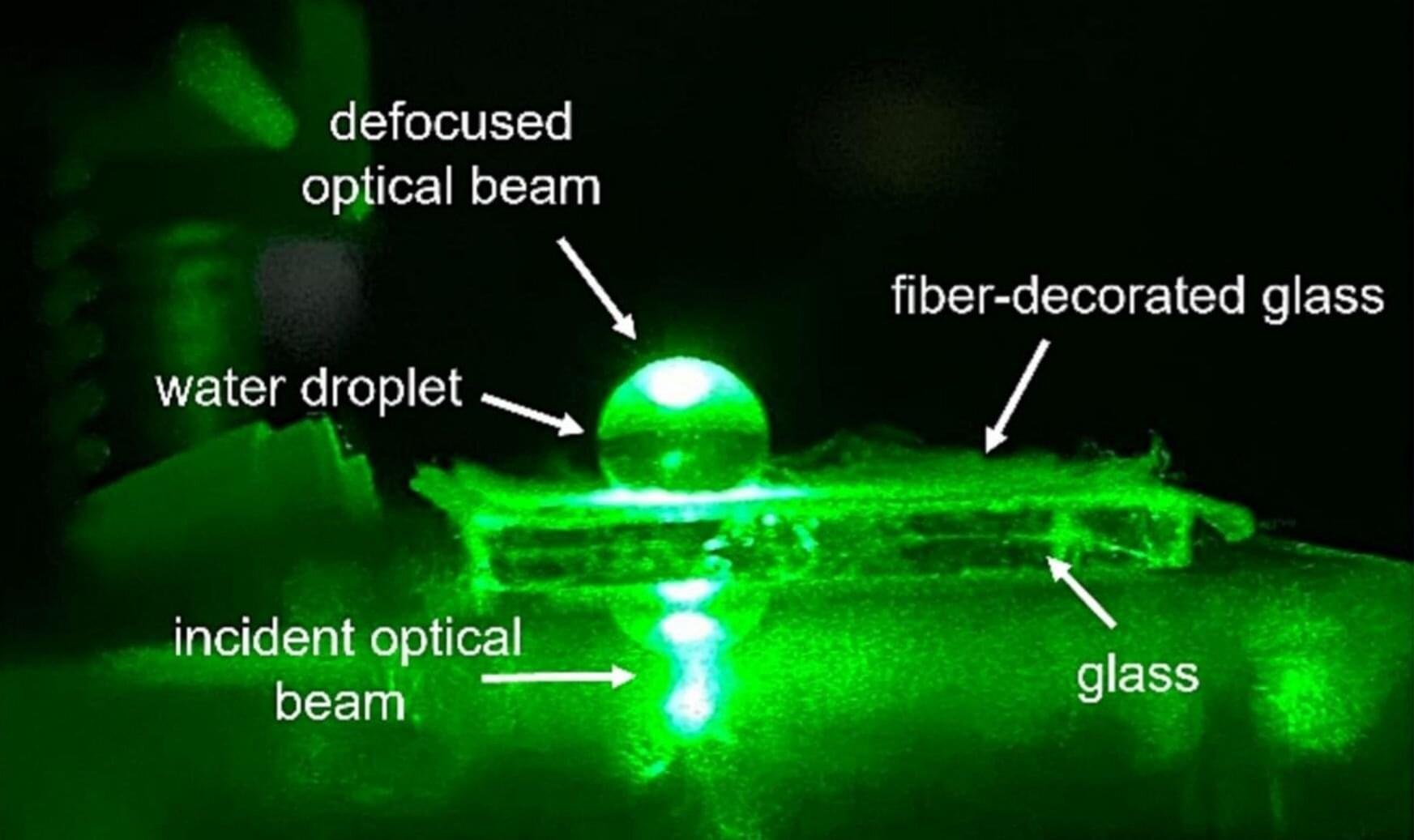
Filipino scientists have discovered a simple, affordable way to make dynamically adjustable water-based lenses that have a wide variety of potential future applications—from classrooms and research labs to cameras and even wearable gadgets. Their research is published in the journal Results in Optics.
By coating an ordinary glass slide with specially prepared polyvinyl chloride (PVC) plastic, the researchers were able to create a hydrophobic surface that could hold a water droplet in a dome shape similar to a magnifying glass. And by adding or removing water from the droplet, they were able to change and control the magnifying power of this liquid lens with minimal loss or distortion.
In a process called “electrospinning,” the researchers melted the PVC in an electric field, which stretches out and deposits the plastic onto the glass slide as very fine microfibers. This makes the surface of the slide more water repellent, and the result is that water droplets stay in a spherical dome shape instead of flattening out.

How can electronic “skin” help advance the electronics and computer industry? This is what a recent study published in Nature hopes to address as a team of researchers from the Massachusetts Institute of technology (MIT) and funded by the U.S. Air Force Office of Scientific Research developed an ultrathin electronic “skin” that can sense heat and radiation. This study has the potential to expand the electronics industry by enhancing wearable and imaging devices used on smaller scales than at present.
For the study, the researchers designed and built a pyroelectric (temperature changes to create electric current) material that is only 10 nanometers thick while exhibiting superior sensing capabilities for wide ranges of heat and radiation. To accomplish this, the team conducted a series of laboratory experiments to verify the material’s capabilities, including using the material on a computer chip that measured approximately 60 square microns (approximately 0.006 square centimeters) and comprised of 100 ultrathin heat-sensing pixels. The pixels were then subjected to temperature changes to demonstrate its ability to measure those changes, which the researchers noted was successful.
“This film considerably reduces weight and cost, making it lightweight, portable, and easier to integrate,” said Xinyuan Zhang, who is a PhD student in MIT’s Department of Materials Science and Engineering (DMSE) and lead author of the study. “For example, it could be directly worn on glasses.”
Human cyborgs are individuals who integrate advanced technology into their bodies, enhancing their physical or cognitive abilities. This fusion of man and machine blurs the line between science fiction and reality, raising questions about the future of humanity, ethics, and the limits of human potential. From bionic limbs to brain-computer interfaces, cyborg technology is rapidly evolving, pushing us closer to a world where humans and machines become one.
Shocking transformation, futuristic nightmare, beyond human limits, man merges with machine, terrifying reality, future is now, ultimate evolution, secret experiments exposed, technology gone too far, sci-fi turns real, mind-blowing upgrade, science fiction no more, unstoppable machine man, breaking human boundaries, dark future ahead, human cyborgs, cyborg technology, cyborg implants, cyborg augmentation, cyborg evolution, cyborg future, cyborg innovations, cyborg advancements, cyborg ethics, cyborg integration, cyborg society, cyborg culture, cyborg development, cyborg research, cyborg science, cyborg engineering, cyborg design, cyborg applications, cyborg trends, cyborg news, cyborg updates, cyborg breakthroughs, cyborg discoveries, cyborg implants, bionic limbs, neural interfaces, prosthetic enhancements, biohacking, cybernetics, exoskeletons, brain-computer interfaces, robotic prosthetics, augmented humans, wearable technology, artificial organs, human augmentation, smart prosthetics, neuroprosthetics, biomechatronics, implantable devices, synthetic biology, transhumanism, bioengineering, nanotechnology, genetic engineering, bioinformatics, artificial intelligence, machine learning, robotics, automation, virtual reality, augmented reality, mixed reality, haptic feedback, sensory augmentation, cognitive enhancement, biofeedback, neurofeedback, brain mapping, neural networks, deep learning, biotechnology, regenerative medicine, tissue engineering, stem cells, gene therapy, personalized medicine, precision medicine, biomedical engineering, medical devices, health tech, digital health, telemedicine, eHealth, mHealth, health informatics, wearable sensors, fitness trackers, smartwatches, health monitoring, remote monitoring, patient engagement, health apps, health data, electronic health records, health analytics, health AI, medical robotics, surgical robots, rehabilitation robotics, assistive technology, disability tech, inclusive design, universal design, accessibility, adaptive technology, human-machine interaction, human-computer interaction, user experience, user interface, UX design, UI design, interaction design, design thinking, product design, industrial design, innovation, technology trends, future tech, emerging technologies, disruptive technologies, tech startups, tech entrepreneurship, venture capital, startup ecosystem, tech innovation, research and development, R&D, scientific research, science and technology, STEM, engineering, applied sciences, interdisciplinary research, academic research, scholarly articles, peer-reviewed journals, conferences, symposiums, workshops, seminars, webinars, online courses, e-learning, MOOCs, professional development, continuing education, certifications, credentials, skills development, career advancement, job market, employment trends, workforce development, labor market, gig economy, freelancing, remote work, telecommuting, digital nomads, coworking spaces, collaboration tools, project management, productivity tools, time management, work-life balance, mental health, wellness, self-care, mindfulness, meditation, stress management, resilience, personal growth, self-improvement, life coaching, goal setting, motivation, inspiration, success stories, case studies, testimonials, reviews, ratings, recommendations, referrals, networking, professional associations, industry groups, online communities, forums, discussion boards, social media, content creation, blogging, vlogging, podcasting, video production, photography, graphic design, animation, illustration, creative arts, performing arts, visual arts, music, literature, film, television, entertainment, media, journalism, news, reporting, storytelling, narrative, communication, public speaking, presentations, persuasion, negotiation, leadership, management, entrepreneurship, business, marketing, advertising, branding, public relations, sales, customer service, client relations, customer experience, market research, consumer behavior, demographics, psychographics, target audience, niche markets, segmentation, positioning, differentiation, competitive analysis, SWOT analysis, strategic planning, business development, growth strategies, scalability, sustainability, corporate social responsibility, ethics, compliance, governance, risk management, crisis management, change management, organizational behavior, corporate culture, diversity and inclusion, team building, collaboration, innovation management, knowledge management, intellectual property, patents, trademarks, copyrights.
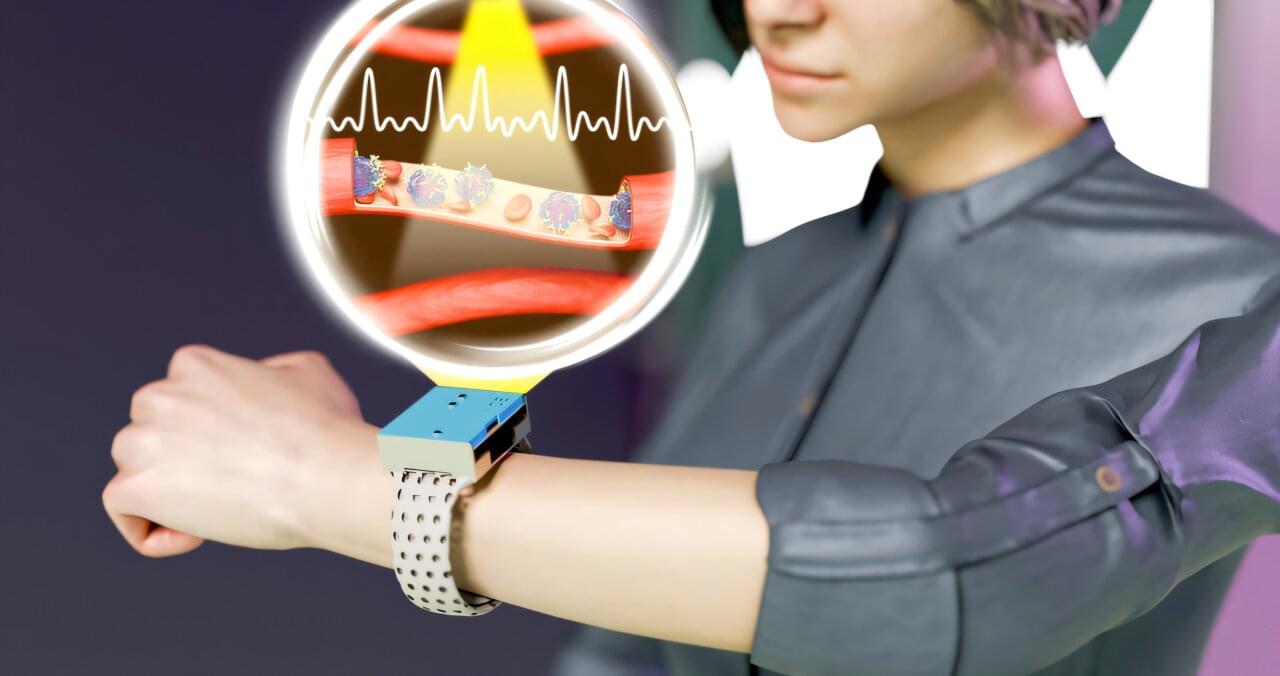
Researchers at MIT have developed a noninvasive medical monitoring device powerful enough to detect single cells within blood vessels, yet small enough to wear like a wristwatch. One important aspect of this wearable device is that it can enable continuous monitoring of circulating cells in the human body. The technology was reported in npj Biosensing.
The device—named CircTrek—was developed by researchers in the Nano-Cybernetic Biotrek research group, led by Deblina Sarkar, assistant professor at MIT and AT&T Career Development Chair at the MIT Media Lab. This technology could greatly facilitate early diagnosis of disease, detection of disease relapse, assessment of infection risk, and determination of whether a disease treatment is working, among other medical processes.
Whereas traditional blood tests are like a snapshot of a patient’s condition, CircTrek was designed to present real-time assessment, referred to in the npj Biosensing paper as having been “an unmet goal to date.” A different technology that offers monitoring of cells in the bloodstream with some continuity, in vivo flow cytometry, “requires a room-sized microscope, and patients need to be there for a long time,” says Kyuho Jang, a Ph.D. student in Sarkar’s lab.
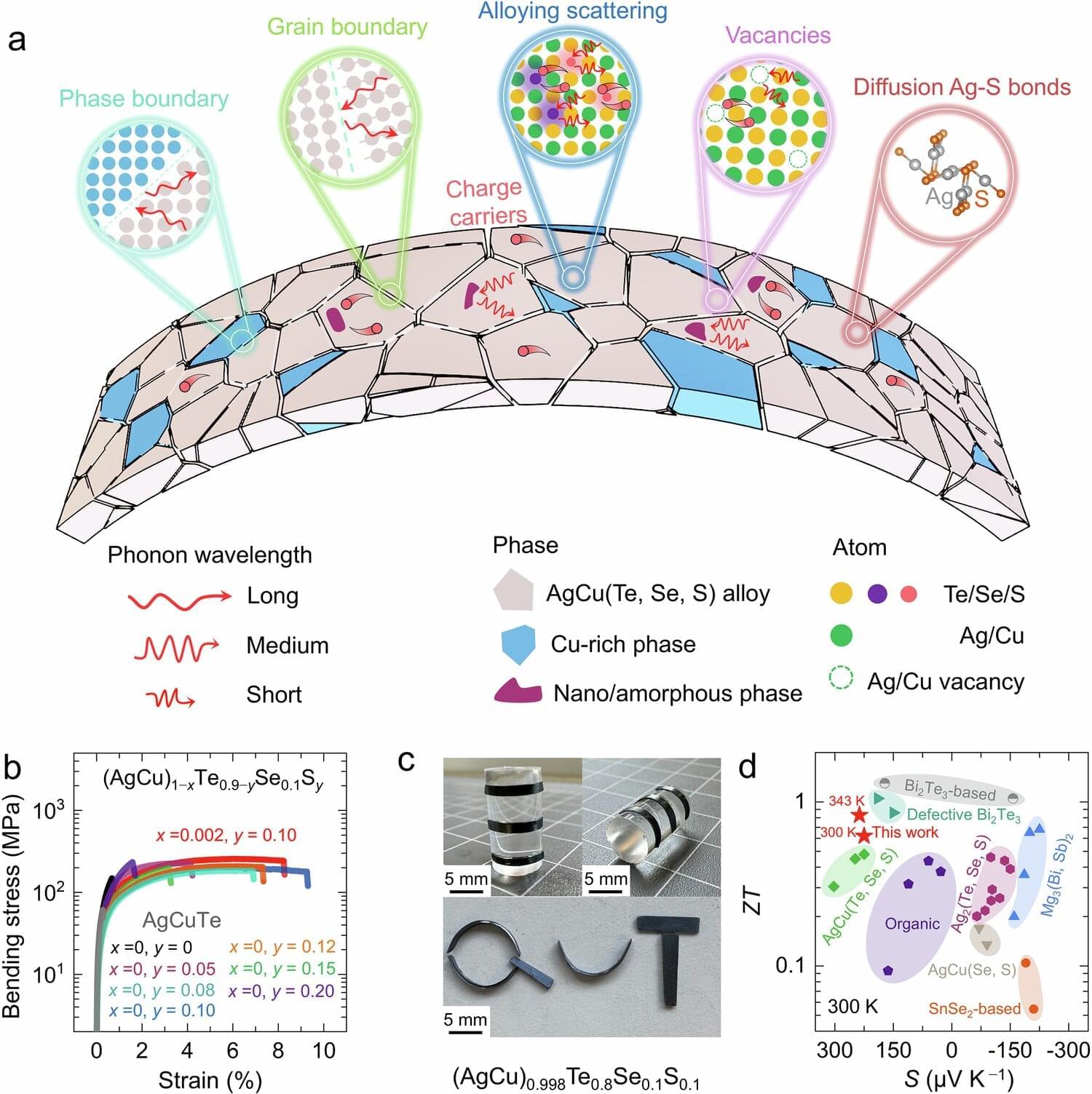
QUT researchers have identified a new material which could be used as a flexible semiconductor in wearable devices by using a technique that focuses on the manipulation of spaces between atoms in crystals.
In a study published in Nature Communication, the researchers used “vacancy engineering” to enhance the ability of an AgCu(Te, Se, S) semiconductor, which is an alloy made up of silver, copper, tellurium, selenium and sulfur, to convert body heat into electricity.
Vacancy engineering is the study and manipulation of empty spaces, or “vacancies,” in a crystal where atoms are missing, to influence the material’s properties, such as improving its mechanical properties or optimizing its electrical conductivity, or thermal properties.
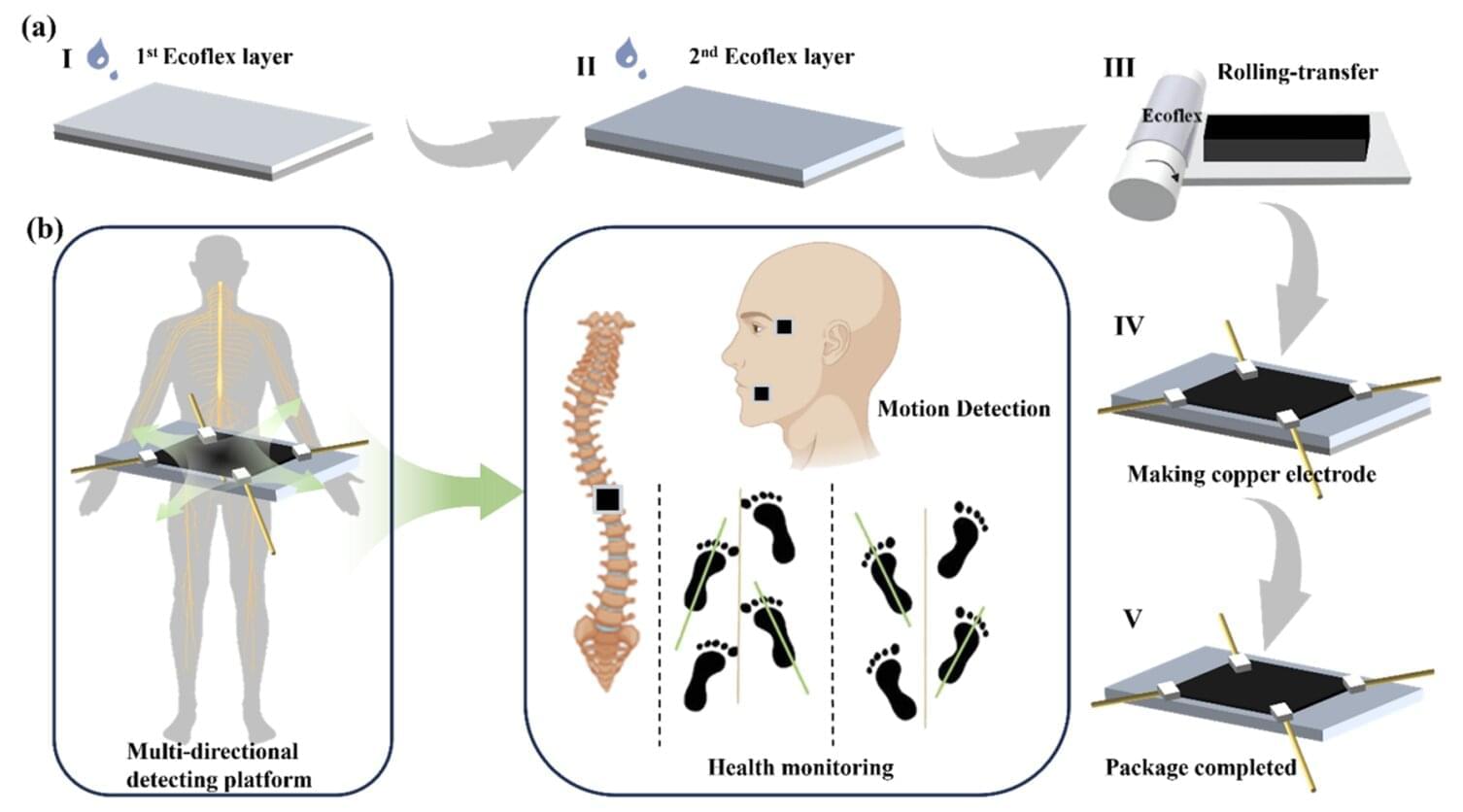
Over the past decades, electronics engineers developed increasingly small, flexible and sophisticated sensors that can pick up a wide range of signals, ranging from human motions to heartrate and other biological signals. These sensors have in turn enabled the development of new electronics, including smartwatches, biomedical devices that can help monitor the health of users over time and other wearable or implantable systems.
Strain sensors, which are designed to convert mechanical force into electrical signals, are among the most widely used sensing devices within the electronics industry, as they can be valuable for tracking both human movements and health-related biological signals. While these sensors are already embedded in many electronic devices, most existing solutions are only able to track movements in one direction.
Sensors that can accurately pick up movements and forces in multiple directions could be highly advantageous, as they could be applied to a wider range of scenarios. In addition, these sensors could be embedded in existing electronic devices to broaden their functions or enhance their capabilities.

Saying one thing while feeling another is part of being human, but bottling up emotions can have serious psychological consequences, such as anxiety or panic attacks. To help health care providers tell the difference, a team led by scientists at Penn State has created a stretchable, rechargeable sticker that can detect real emotions—by measuring things like skin temperature and heart rate—even when users put on a brave face.
The researchers recently unveiled the wearable patch that can simultaneously and accurately track multiple emotional signals in a study published in the journal Nano Letters.
“This is a new and improved way to understand our emotions by looking at multiple body signals at once,” said Huanyu “Larry” Cheng, the James L. Henderson, Jr. Memorial Associate Professor of Engineering Science and Mechanics at Penn State and lead author of the paper.
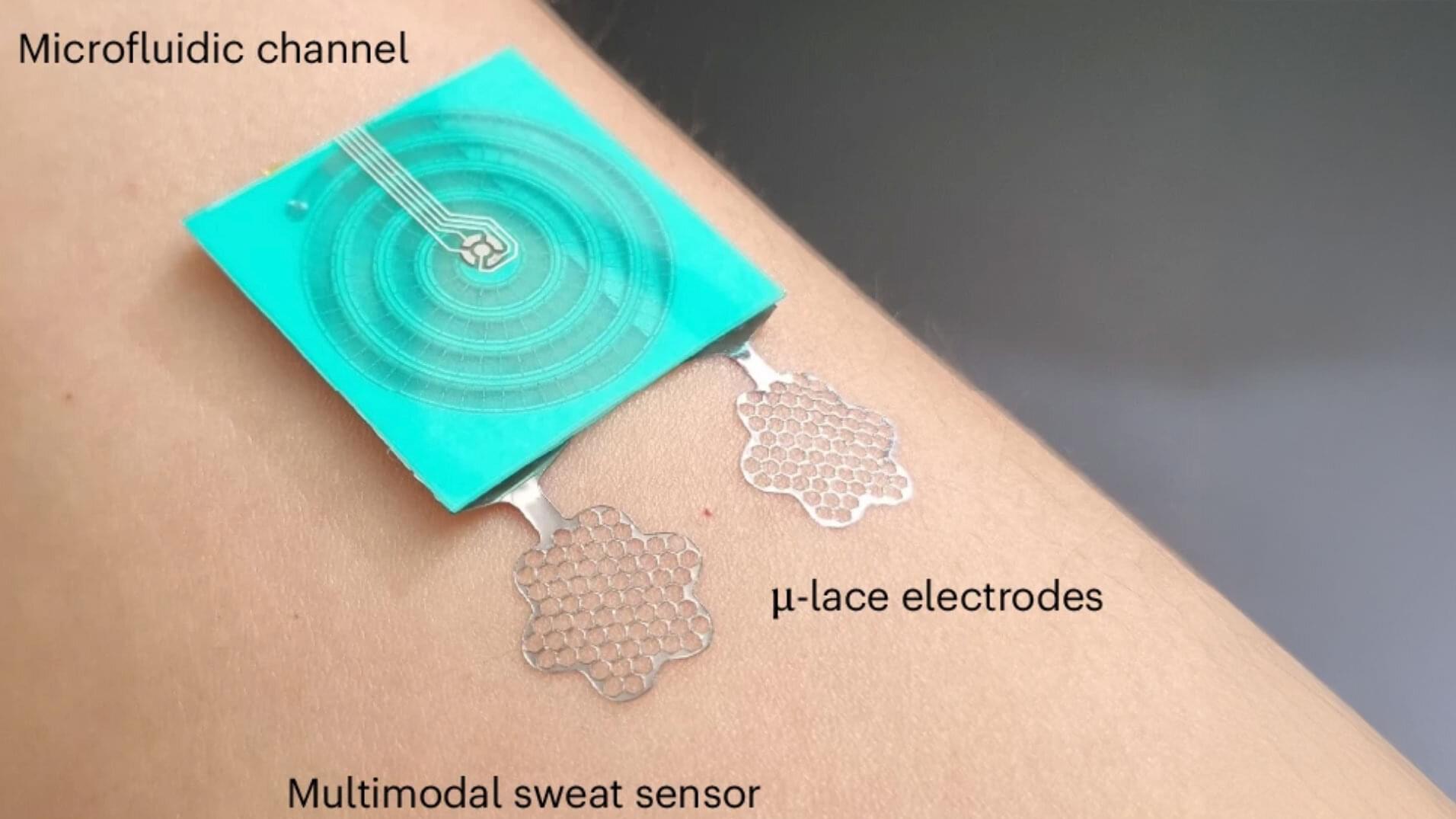
Dehydration can sneak up on you. Whether you’re out jogging or sitting at a desk, it’s easy to lose track of your fluid intake. But a new, tiny sweat sensor may soon solve this problem. Designed by UC Berkeley researchers, this wearable device can measure changes in your hydration status and help you decide when it’s time to take a break and get some water.
In a study recently published in Nature Electronics, researchers demonstrated how their sweat sensor measures electrodermal activity (EDA), an electrical property of the skin, to monitor hydration levels during physical activity. Until now, EDA, or skin conductance, has been thought to be effective at assessing only mental stress.
These findings could broaden EDA’s role in physiological monitoring and someday provide a simple way for people to also avoid dehydration.
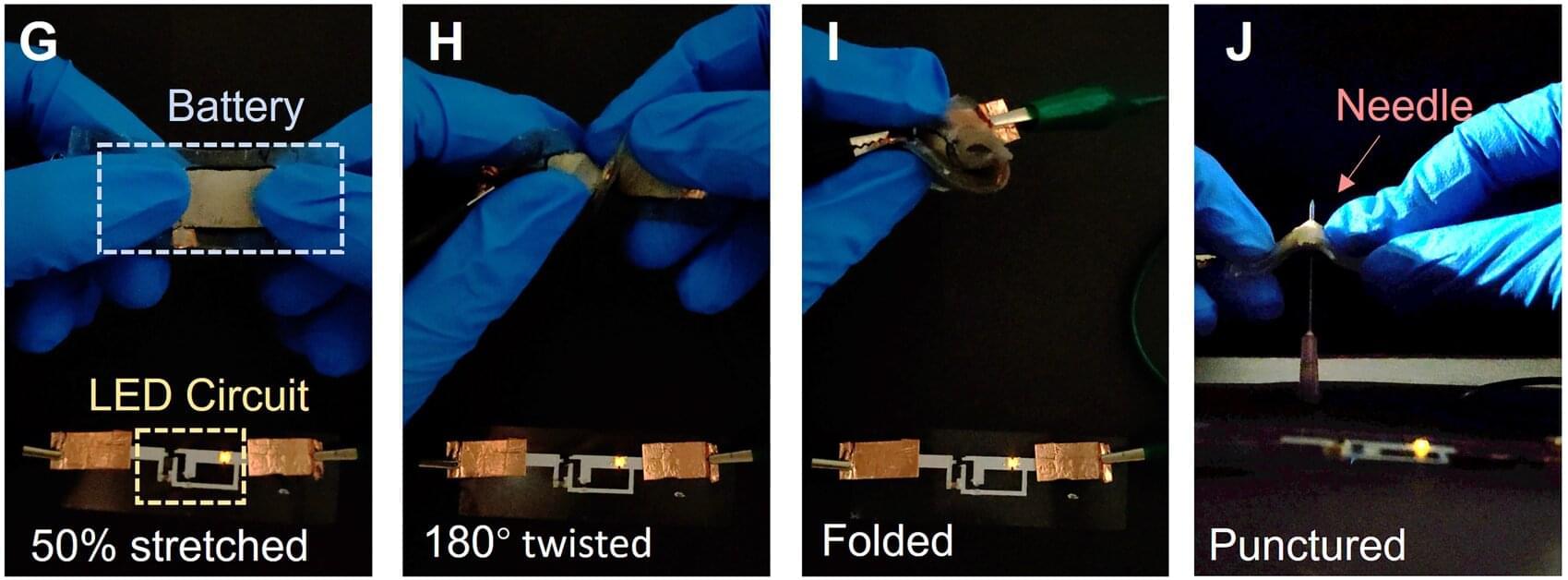
A multidisciplinary team at the University of California, Berkeley, the Georgia Institute of Technology and the Hong Kong University of Science and Technology has developed a stretchable, self-healing lithium battery that remains stable after 500 charge/discharge cycles. In their paper published in the journal Science Advances, the group describes how they developed the battery and possible uses for it.
Over the past several years, scientists have been developing batteries for different types of applications. One such type is the stretchable battery, which could be used in wearable electronics. Recently, a team at Linköping University announced that they had developed a fluid battery that can take any shape, allowing for its use in a wide variety of applications. In this new study, the team at UC Berkeley has developed a stretchable battery that also heals itself.
To make the new battery, the research team started with a zwitterionic polymer that had both a positive and negative charge. With such polymers, water molecules bond with the charged parts while the lithium ions are attracted by the negative parts of plastic. The arrangement allows water to be tightly bound in the battery, reducing the risk of it splitting when voltage is applied, while still allowing lithium ions to be released when desired.